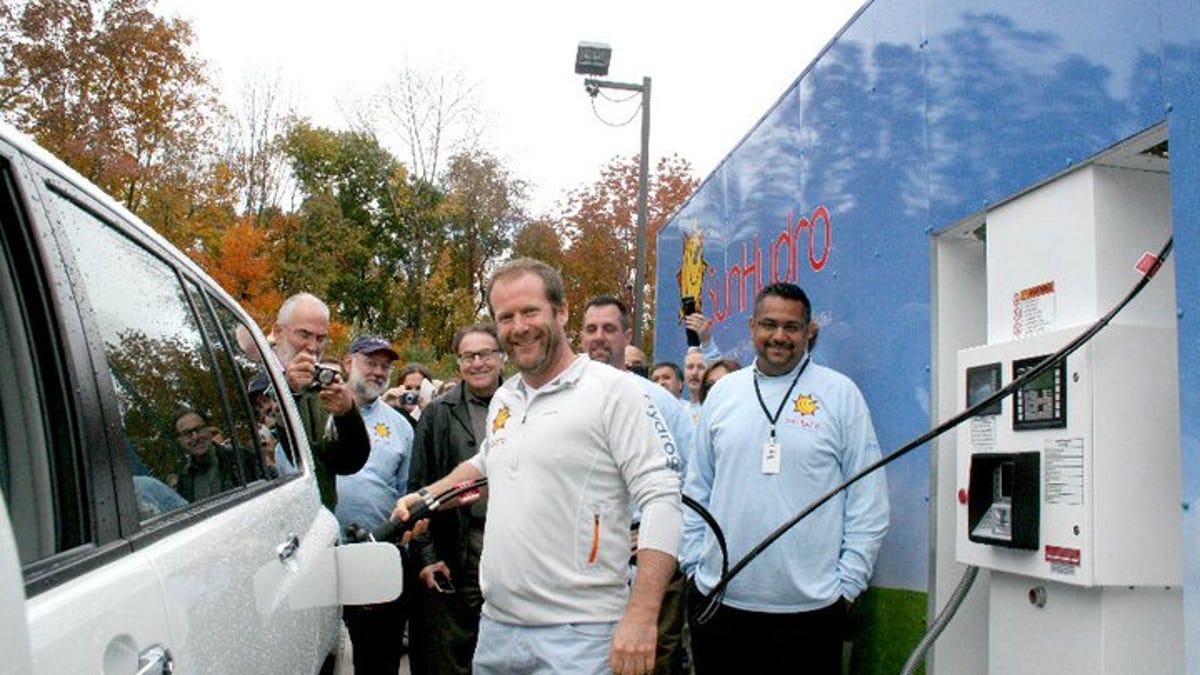SunHydro opens solar hydrogen refueling station in CT
SunHydro opened its first solar hydrogen fueling station in Connecticut last week, marking what the company hopes will be the start of the East Coast hydrogen highway.

SunHydro opened its first solar hydrogen fueling station in Connecticut last week, marking what the company hopes will be the start of the East coast hydrogen highway.
From Maine to Miami, the Connecticut-based company plans to open a network of mostly 24-hour self-service stations that generate hydrogen onsite using solar energy and a proton electrolyzer made by Proton Energy, SunHydro's sister company.
The station is in SunHydro's parking lot in Wallingford, Conn., and its rooftop is equipped with 75 kw worth of solar panels that the station's generator uses to produce approximately 2.6 kilograms of hydrogen fuel per hour, according to Proton Energy president Robert Friedland. Its generator has a maximum output of 65 kg per day that works to keep a 90 kg storage tank full at all times. While the station is designed to run off of solar power, it's still tied to the grid. Solar panels can only generate electricity while the sun is out, so if a car refuels after dark and consumes 5 kg from the tank, the station will draw electricity from the power grid to run the generator and produce hydrogen until the storage tank is full. To run completely off of solar, the station would need a much larger hydrogen generator that would operate only during the day.
SunHydro's fuel may be clean, but it ain't cheap--one kg of hydrogen will run you $10, according to Wired. The upside is that 1 kg of hydrogen delivers the driving range of 2.2 gallons of gas in a vehicle. The math doesn't favor hydrogen cost-wise, but the karma generated is priceless.
Initially it will serve 10 Toyota Advanced Fuel Cell Hybrid Vehicles--the hydrogen-fueled equivalent of the Highlander--that SunHydro's staff and other community members (including BNET blogger Jim Montavalli) will be testing for the next few years. A Toyota FCHV-adv averages 68.3 miles/kg (approximate mpg equivalent), and a full tank has an estimated range of 431 miles, which roughly translates to a 6 kg capacity. Within three years, SunHydro expects 100 fuel cell vehicles from a range of carmakers in the regional demonstration program. After the East Coast hydrogen highway is completed, the alternative fuelmaker is planning a similar corridor from New York to California and is developing solar hydrogen generators for the home. Honda operates a similar solar hydrogen station in California and is producing a home version of system the for FCX Clarity drivers.
SunHydro's technology eliminates concerns about the distribution model for hydrogen and does not require fossil fuels, as some other hydrogen generation methods do. Yet with the mass production of electric vehicles such as the Nissan Leaf paired with the existing electric grid, hydrogen fuel cell vehicles face stiff competition. Battery technology will improve range and lower cost over the next few years, although consumer adoption will be the limiting factor. Is it too late for hydrogen, or is there a need for both alternative fuels in the car market? Let me know your thoughts in the comments.

